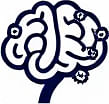PESTLE Analysis: A Key Mental Model for Strategic Thinking
 by Shanie Goodwin
by Shanie Goodwin
PESTLE Analysis offers a structured way to examine external factors affecting decisions. By breaking down political, economic, social, technological, legal, and environmental elements, it helps in making informed choices in business and beyond. This model supports better cognitive development through practical application.
PESTLE Analysis serves as an essential mental model for evaluating the broader environment that influences decisions. This framework helps individuals and organizations assess key external factors to improve strategic planning.
The Basics of PESTLE Analysis
PESTLE Analysis involves six main categories that cover various aspects of the external world. Each category provides a lens through which to view potential opportunities and challenges.
First, the political category looks at government policies and stability. For instance, changes in regulations can affect industries like healthcare. Economic factors focus on aspects such as inflation and employment rates, which play a role in market conditions.
Social elements include demographic shifts and cultural trends. These can shape consumer behavior in ways that businesses must anticipate. Technological advancements drive innovation, offering new tools for efficiency and growth.
Legal considerations involve laws and compliance issues that organizations need to follow. Environmental factors address sustainability and climate impacts, which are increasingly important in global strategies.
Applying PESTLE Analysis in Practice
In business settings, this mental model aids in forecasting trends and adapting strategies. For example, a company entering a new market might use PESTLE to identify risks related to local laws or economic conditions.
Professionals in psychology can apply it to understand how societal changes affect mental health services. Shifts in social norms might influence the demand for certain therapeutic approaches.
For lifelong learners, practicing PESTLE encourages a broader perspective on personal decisions. When considering a career change, one could evaluate how technological trends might open new opportunities.
Breaking Down Each Component
Let’s explore the components in more detail to see how they interconnect.
- Political: This covers government actions and international relations. Elections or trade policies can create uncertainty for businesses.
- Economic: Factors like GDP growth and currency values impact financial planning. A slowdown in the economy might lead to budget adjustments.
- Social: Population changes and lifestyle trends affect product development. An aging population could increase demand for health-related services.
- Technological: Innovations in AI and digital tools transform operations. Adoption of new technology can provide a competitive edge.
- Legal: Compliance with data protection laws is crucial in many sectors. Violations can result in penalties and reputational damage.
- Environmental: Climate change and resource scarcity push for greener practices. Companies are now prioritizing eco-friendly initiatives to meet consumer expectations.
Benefits of Using PESTLE Analysis
This mental model promotes clearer decision-making by highlighting potential external influences. It allows users to anticipate changes and prepare accordingly.
In cognitive development, regularly applying PESTLE can enhance critical thinking skills. By systematically reviewing factors, individuals build habits that lead to more thoughtful choices.
However, it is important to recognize limitations. PESTLE might overlook internal factors or rapid changes that occur unexpectedly. Combining it with other tools can provide a fuller picture.
Real-World Examples
Consider how a tech startup might use PESTLE. They could analyze social trends to gauge demand for their app, while monitoring legal updates on data privacy.
In psychology, researchers might examine environmental factors to study how pollution affects community well-being. This approach helps in developing targeted interventions.
For business strategies, a retail chain could assess economic indicators to adjust inventory levels. Understanding these elements ensures resilience against market fluctuations.
Encouraging Practical Use
To get started with PESTLE, begin by listing factors in each category relevant to your situation. Use simple tools like spreadsheets to organize thoughts and track changes over time.
This practice not only sharpens strategic thinking but also fosters adaptability in a dynamic world. Whether in professional roles or personal pursuits, integrating PESTLE into routines can lead to more effective outcomes.
In summary, PESTLE Analysis stands out as a practical mental model for navigating external influences. By focusing on its components, users can make informed decisions that support long-term success.
